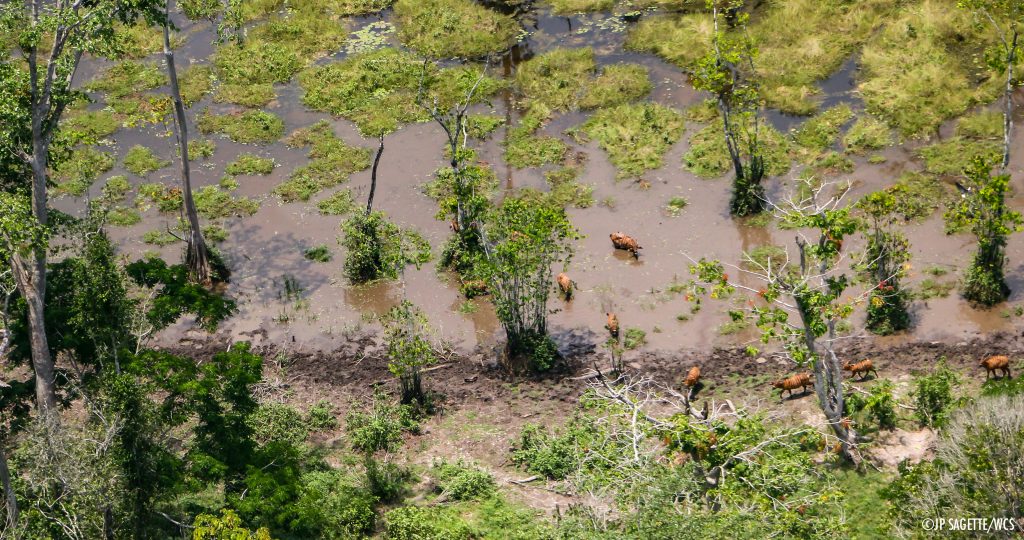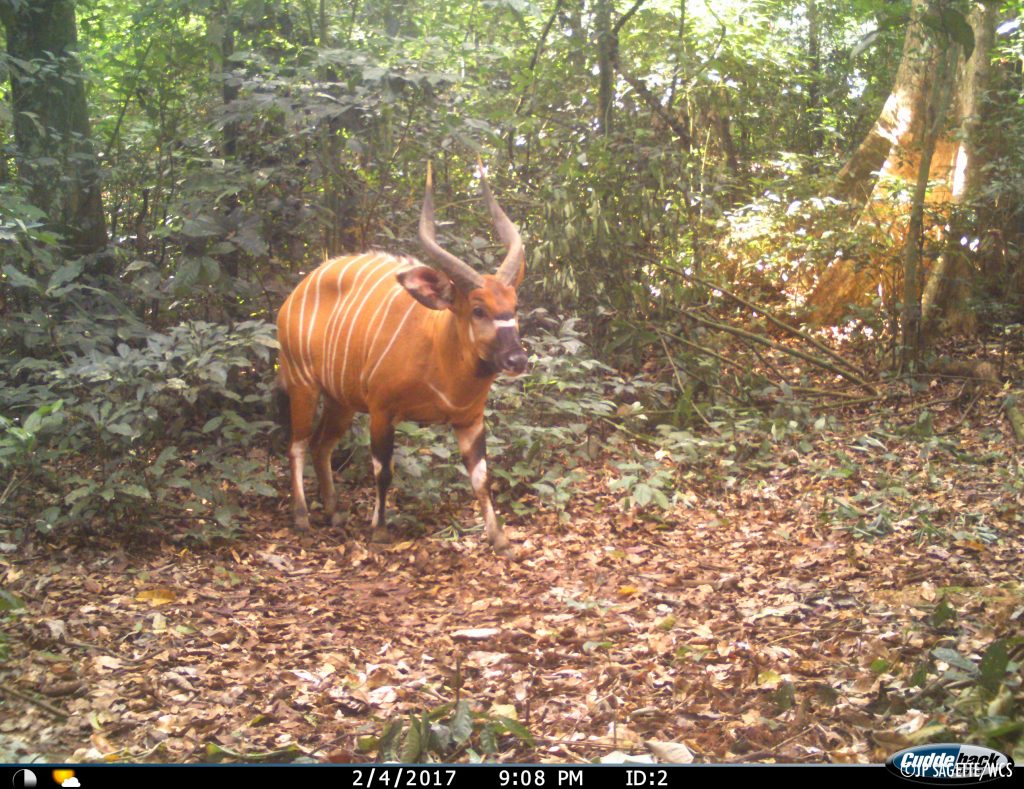
Securing a brighter future for bongo
With their rich red flanks dissected by perfect, white stripes, bongo are one of the most striking antelope in Africa. During recent surveillance flights over the Nouabale-Ndoki National Park, a large herd of bongos was observed in one of the area’s forest clearings – a very rare sighting. This charismatic species, suffered a severe, local population decline in 1997. The die-off, which spread across the forests of northern Congo, was caused by an outbreak of biting, Stomoxys flies. The flies drove the largest forest antelope to exhaustion, placing them at higher risk of predation and sapping them of the energy needed to feed and reproduce. Bongo numbers fell rapidly. In some bais where Bongo were once regular visitors, researchers recorded a complete disappearance of the species.
At the same time bongo were being sought after by trophy hunters in the area. Trophy hunting comes with its pros and cons. If done sustainably, and in collaboration with local communities and conservation authorities, hunting could bring needed jobs to the area and protect wildlife. But unsustainable hunting practices can be detrimental. Each year the hunting company operating in the Nouabale-Ndoki National Park periphery was given a hunting quota of 15 bongos, yet no accurate bongo population estimate existed for the area. This quota seemed high due to the generally low population densities of bongo, and their habitat specificity. Had the area’s bongo population fully recovered from the Stomoxys fly die-off? How many remained in the area? And was an annual offtake of 15 bongos sustainable?

To find some answers, The Nouabale-Ndoki National Park research department launched a specific project to determine bongo abundance in order to help the Congolese Government set guidelines for sustainable hunting practices in the area. Because bongos are so rare and elusive, the usual methods for estimating wildlife abundance don’t work, so a grid of camera traps was set up to be able to more reliably count the area’s Bongo population and determine their population structure. Over two years pairs of camera traps were moved across a grid covering almost the entire Kabo concession, including known bongo hotspots. Each pair of cameras was placed to capture the unique striping pattern on both sides of the bongo, allowing researchers to identify individuals and note when and where they were recaptured. This allowed the researchers to estimate the number of bongo in the safari hunting concession. Further modelling allowed a better understanding of the consequences of different levels of hunting and potential future outbreaks of Stomoxys flies on the population.

Following the completion of the study, the report presented to the Ministry of Forestry Economy was validated and the proposed quotas adopted as of August 2017. Not only did the Ministry reduce bongo and buffalo hunting quotas from 15 to 3 and 5 respectively per annum, but after looking at the results of the survey they concluded that previous quotas were unsustainable and decided to also reduce quotas of all species on the Safari hunting list, including several duiker species and red river hogs.
The Nouabale-Ndoki Foundation researchers who led the study were trained in camera trapping survey techniques and analysis, together with two agents from CNIAF (Centre National d’Inventaire et Aménagement des Ressources Forestières – CNIAF). The two CNIAF representatives that completed this training developed a strong enough understanding of the study that they played an important role in presenting and defending it to the Ministry. This strong collaboration between the park and government authorities resulted in a win for wildlife. Next month, when the hunting season once again opens, the trophy hunters will return to their concession in the park periphery. Now, if hunting laws and quotas are properly enforced, there is hope that that Congo’s future generations will continue to witness these spectacular herds of rare bongo antelope in the area’s bais.


essaypa.com
Although this multi-interaction offline scenario
enriches each student. The education trend has evolved a whole lot;
the current scenario is always that students prefer migrating to
various countries. Here again having much to perform also
makes you focus more which naturally as already explained above, cuts out distractions and
leads to increasing productivity.
web site
It’s awesome in favor of me to have a web page, which is
valuable in support of my know-how. thanks admin
web site
Porcelain veneers are fabricated from the actual materials often often called porcelain while thee actual so-referred to as upvc composite veneers are
product of resin. There are some casinos, comparable to Celtic Casino
or Europa Casino, that movie the games from a studio with
dwell dealers in a casino setting. As a part of a continual emphasis on product improvement, Sports Interaction has
delivered once agin with their mobile betting software.